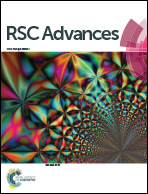Ru-catalysed oxidative cyclisation of 1,5-dienes: an unprecedented role for the co-oxidant†
Abstract
The Ru-mediated oxidative cyclisation of 1,5-dienes to furnish 2,5-dihydroxyalkyl-substituted tetrahydrofuran-diols (THF-diols) represents a practical approach for the synthesis of many bioactive natural products. In the current study, we reported profound findings obtained by density functional theory (DFT) simulations, and they were consistent with the experimental conditions. The results set out a catalytic cycle within intermediacy of NaIO4-complexed Ru(VI) species. Importantly, the co-oxidant played a critical role in the cyclisation step and subsequently the release of THF-diols. Following the formation of Ru(VI) glycolate, cyclisation and THF-diol release proceeded through NaIO4-coordinated Ru(VI) intermediates, outpacing the Ru(VIII) glycolate or THF-diolate intermediates and subsequently entering “second cycle” type pathways. The results indicated a cycle involving Ru(VIII)/Ru(VI)/Ru(IV)/Ru(VI) rather than Ru(VIII)/Ru(VI)/Ru(VIII)/Ru(VI)/Ru(VIII). Additionally, the existence of an electron-withdrawing group (EWG) on one of the double bonds of 1,5-dienes revealed that the regioselectivity of the Ru-catalysed oxidative cyclisation was predominantly initiated at the electron-rich alkene. Overall, this study offers new insights, which were ignored by earlier experimentalists and theoreticians, into the Ru-catalysed functionalizations of alkenes and 1,5-dienes.



 Please wait while we load your content...
Please wait while we load your content...